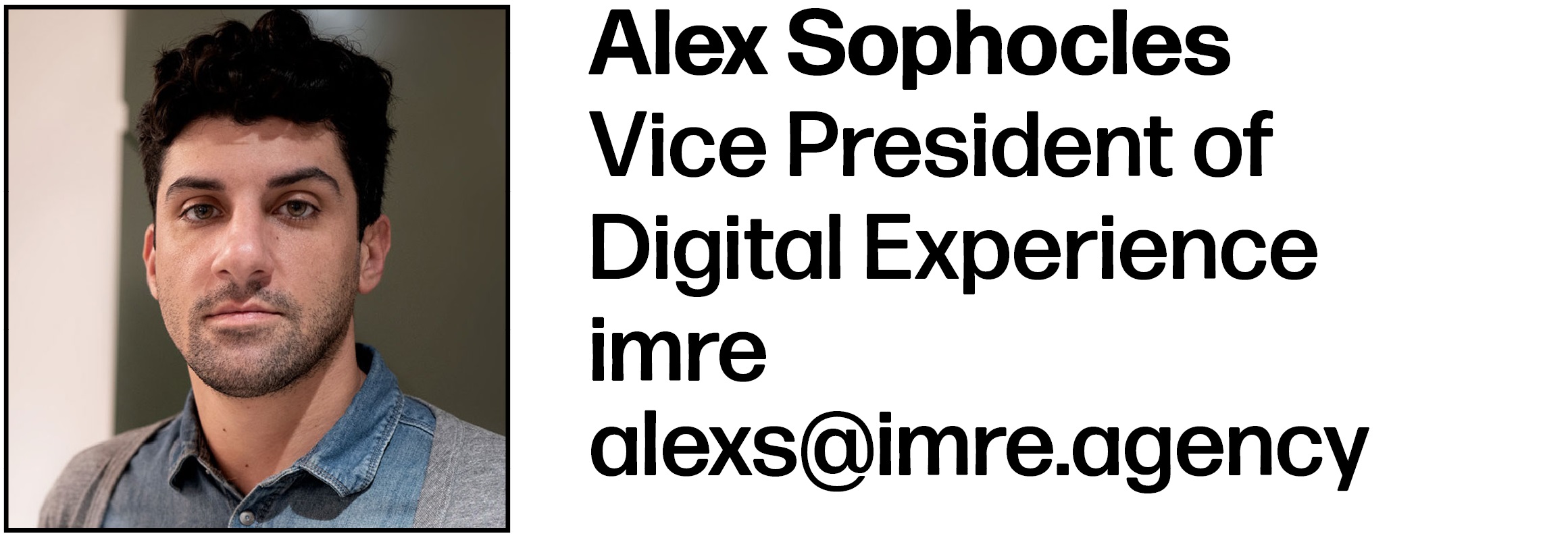PM360 asked experts in engaging healthcare providers what strategies work best now following the changes caused by the pandemic and what companies can do to bridge the gaps between HCPs and the parties they interact with. Specifically, we asked them:
- What is the best model for engaging with HCPs now given how things have changed the past few years? What works? What doesn’t? What newer tactics are worth trying?
- How can companies help bridge the gaps between HCPs and patients, payers, and other HCPs? What can companies provide to ensure the various parties can speak the same language, have similar information, and make better decisions?
 Pharma brands are increasingly engaging HCPs with programs utilizing AI-driven real-world data (RWD-AI). This combination of data and technology enables brands to take a future-focused approach to HCP engagement. Any model using past script data to serve as a proxy for future HCP behavior is at a disadvantage. Leveraging an AI model that is predictive of future patient needs allows pharma marketers to support physicians with clinically relevant information at just the right time regardless of the channel where it’s delivered.
Pharma brands are increasingly engaging HCPs with programs utilizing AI-driven real-world data (RWD-AI). This combination of data and technology enables brands to take a future-focused approach to HCP engagement. Any model using past script data to serve as a proxy for future HCP behavior is at a disadvantage. Leveraging an AI model that is predictive of future patient needs allows pharma marketers to support physicians with clinically relevant information at just the right time regardless of the channel where it’s delivered.
In addition, the social environment is changing for HCP engagement. Content is being delivered to physicians on social media outside of the traditional “gated” physician social channels. For example, digital technology can determine when a physician is using social platforms such as Instagram and Facebook both inside and outside of the office environment and engage physicians with relevant brand content. This is a huge advancement by opening ungated platforms to more meaningful healthcare dialogues with physicians. We will continue to see omnichannel programs successfully expand physician engagement this year to include messaging outside of the point of care.
 COVID-19 accelerated HCP’s digital maturity and pushed pharma to more quickly adopt virtual workforces and increase their investments in digital channels and technologies. Although face-to-face engagements remain highly impactful, we are now in an era of where a more balanced omnichannel engagement strategy can yield better results.
COVID-19 accelerated HCP’s digital maturity and pushed pharma to more quickly adopt virtual workforces and increase their investments in digital channels and technologies. Although face-to-face engagements remain highly impactful, we are now in an era of where a more balanced omnichannel engagement strategy can yield better results.
Access remains a challenge, so pharma must focus on understanding and engaging around HCPs’ unique needs. While one physician may want to know about the adverse effects of the brand, another may care more about the impact on practice economics. Pharma needs to connect strategic brand choices to personalized engagement and change direction as the market evolves. To be effective:
- Invest in a bedrock of comprehensive and connected customer data, going beyond prescription volumes and capturing real-time feedback from every interaction
- Ensure advanced analytic capabilities are nurtured to assess personal and non-personal interactions which will drive predictive, pre-emptive engagement that optimizes budgets
- Develop bold, new content in a modular fashion to increase speed to market and enable easier re-use
- Empower marketers to make agile promotion decisions leveraging robust data and analytic tools
 With the upswing of interconnected strategies such as “omnichannel” and data-driven design, we are at the dawn of a new era of medium agnostic marketing. Imagine a world where patient, non-personal promotion, and personal promotion marketing live as one cohesive campaign within customer data platforms, built with sophisticated sales rep strategies that provide reps visibility beyond what was previously possible.
With the upswing of interconnected strategies such as “omnichannel” and data-driven design, we are at the dawn of a new era of medium agnostic marketing. Imagine a world where patient, non-personal promotion, and personal promotion marketing live as one cohesive campaign within customer data platforms, built with sophisticated sales rep strategies that provide reps visibility beyond what was previously possible.
Understanding what regions have the highest influx of patients interested in a product or brand, triangulating that with doctors or specialists within that region, and notifying reps of those leads can foster the patient and doctor relationship resulting in direct influence over that treatment decision process. Building web-based, digital-first, increasingly sophisticated interactive core visual aids (CVAs) and tools that connect directly to Veeva or Salesforce can send deeper information about HCP interest and brand health to reps, along with pre-approved next steps and calls to action.
All of this empowers them to work smarter, not harder, while allowing them to increase the quantity and quality of relationships. Using zero-party data helps customize experiences in a more meaningful way for the unique needs or interests of patients and doctors, ultimately increasing the success rate at which reps can drive adoption.
 Communication between HCPs and patients is more of a two-way dialogue when discussing treatment options than pharma marketers might realize; particularly when a patient is dealing with a chronic condition and likely to be well-educated on the disease. According to a Sermo study, when therapeutic benefits are comparable among choices, 59% of physicians report patient choice influences their decisions regarding drug and treatment plans.
Communication between HCPs and patients is more of a two-way dialogue when discussing treatment options than pharma marketers might realize; particularly when a patient is dealing with a chronic condition and likely to be well-educated on the disease. According to a Sermo study, when therapeutic benefits are comparable among choices, 59% of physicians report patient choice influences their decisions regarding drug and treatment plans.
To help inform patients, HCPs have told us their patients prefer digital content. Patients tend to get their information from online research (44%), and recommendations from friends and family (16%) outperform digital ads (10%) or TV ads (6%). Publishing patient-facing online content and testimonials will reinforce this trust and be more likely to influence patients when discussing care options with their physicians.
Meanwhile, payers want manufacturer partners that demonstrate differentiation and value effectively, are open to value contracting, and proactively support them. In a recent Sermo survey of payers, 40% say their ideal pharma/med-tech partner is good at establishing clinical differentiation through strategies like identifying the subpopulations best suited for their products. Payers respond to information with guidelines (83%), clinical trials (75%), government data (67%), and real-world evidence (58%) the most.
 As marketing campaigns continue to evolve and integrate various datasets, the need for aligned audience strategies grows. Historically, different audiences have been viewed as requiring separate message needs or product support services. Thus, separate teams were often held responsible for individual audiences’ strategies, messaging, and tactical activations.
As marketing campaigns continue to evolve and integrate various datasets, the need for aligned audience strategies grows. Historically, different audiences have been viewed as requiring separate message needs or product support services. Thus, separate teams were often held responsible for individual audiences’ strategies, messaging, and tactical activations.
An often-overlooked approach that can yield immediate new strategies and services is cross audience planning. This involves starting with the hypotheses and campaign end objectives for each audience and then working backwards to build complete messaging frameworks and audience mapping journeys. The result are strategies that allow for clear points of intersection on both messaging and engagement across audiences as opposed to by audience. Thus, initiatives such as CRM, patient support, and financial services are viewed as audience holistic with proper interdependencies defined.
Further, starting with cross audience planning allows for the proper evaluation and decisioning of all data streams, including identifying which data inputs and outputs can help fine tune front-end campaign activation and enhance back-end optimization. While each audience plays a different role, the desired outcomes are a team effort. Knowing what data to value, collect, and act upon starts with defining audience commonalities.
 We know what works when it comes to bridging gaps between patients and HCPs. Patient-centered communication strategies such as shared decision-making, teach-back, and motivational interviewing have been widely shown to help providers uncover patients’ unique needs, build patients’ trust in HCPs, and ensure that patients understand and can act on HCPs’ recommendations. It would benefit pharma companies to leverage these types of strategies in innovative ways. But as important as this is, it may not be enough.
We know what works when it comes to bridging gaps between patients and HCPs. Patient-centered communication strategies such as shared decision-making, teach-back, and motivational interviewing have been widely shown to help providers uncover patients’ unique needs, build patients’ trust in HCPs, and ensure that patients understand and can act on HCPs’ recommendations. It would benefit pharma companies to leverage these types of strategies in innovative ways. But as important as this is, it may not be enough.
Pharma companies should bear in mind that HCPs need support too. They can start by gaining a deep understanding of the challenges HCPs encounter when enacting patient-centered communication within the context of their day-to-day demands. They can drive the development of resources that support patient-centered care in minimally burdensome ways, or that facilitate continuity of care between providers. They can lobby payers to incorporate the time needed for patient-centered communication into billing practices or move toward a more value-based model that rewards patient-centered care. And lastly, they might also consider ways to help overburdened providers feel heard, understood, and valued, because it’s likely this will put them in a better position to pass these same messages on to their patients.







